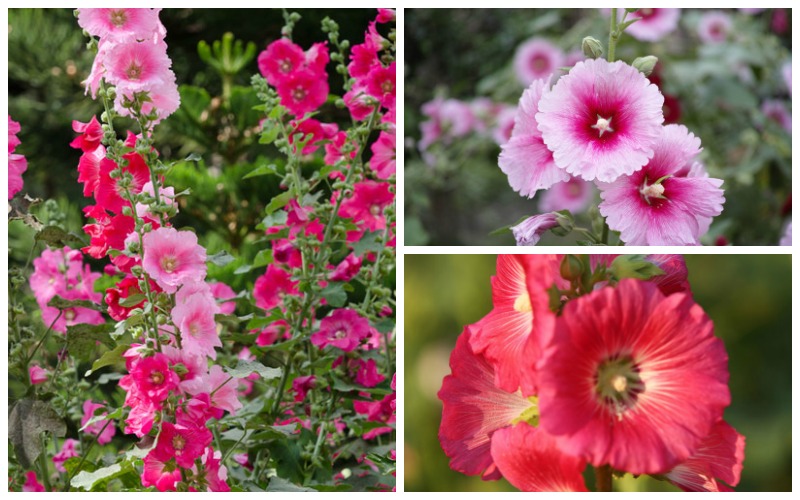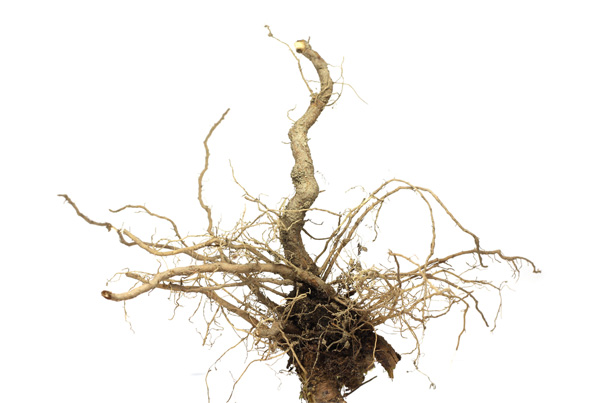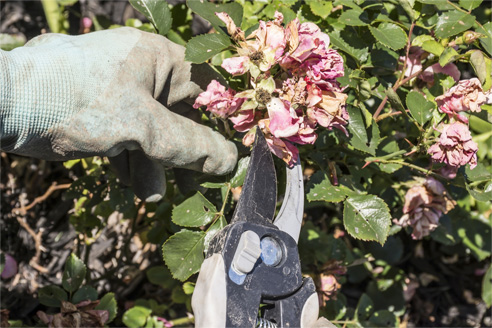Hollyhocks are beautiful flowers that are often mistaken for something else. In fact, my grandmother often referred to them as “Rosa Sharons.” Though the flower is similar to a Rose of Sharon, the similarities in the leaves are simply non-existent. Hollyhocks are biennial flowers, so that means the blooms will not be bright and vibrant over night, but with time, you will have a spectacular garden. Let’s explore some of the more popular types of Hollyhocks to help you decide which variations you want in your garden.
Alcea Rosea
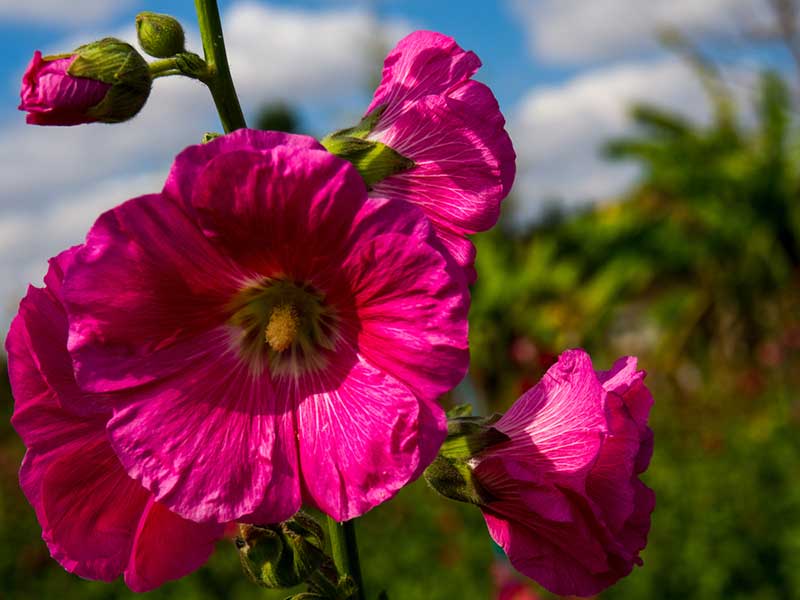
This is the most common type of Hollyhock. It grows to be five to eight feet tall, and it will bloom during the warm summer months of the year, which means June through August. The flowers can be a variety of vibrant colors ranging from pink and red to white and yellow. Once you plant these flowers, they will reseed themselves and come back each year to beautify your garden.
Here are some of my favorite varieties of Alcea Rosea:
Double Apricot – I know, it sounds like food, but this variety of Hollyhock is a gorgeous double bloom that is a soft apricot color. The petal design of this flower reminds me of a classic pettiskirt. It would look amazing as a boarder around the edge of your garden.
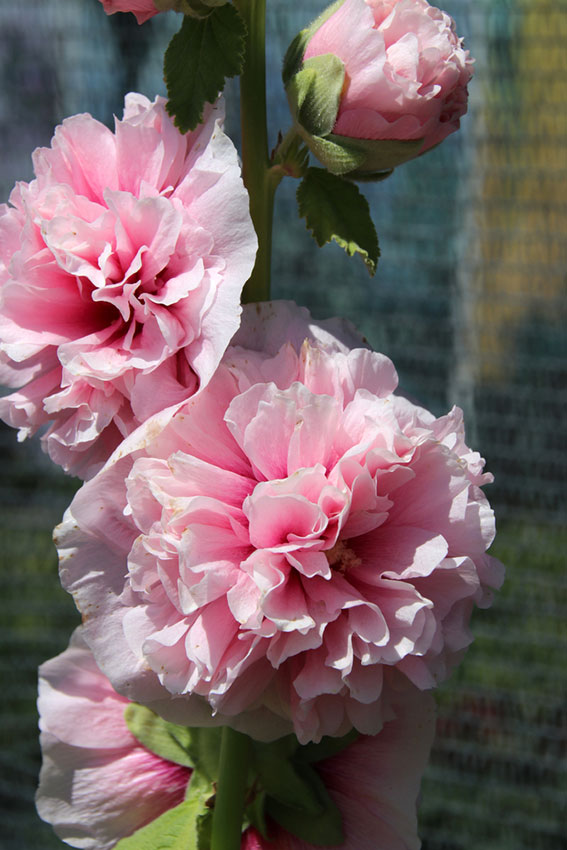
Peaches -n- Dreams – This variety is one that blooms a double puffy pastel peach bloom that seems to be blushing tints of pink and yellow. Peaches -n- Dreams create a lovely contrast against any brick walls that may be in your garden.
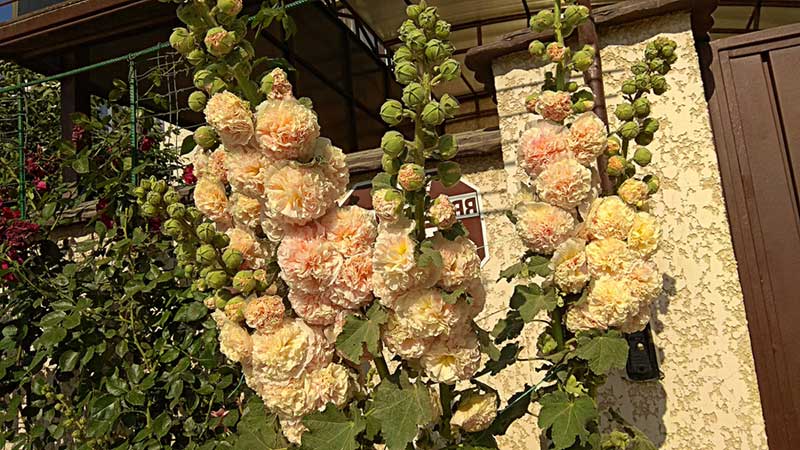
Scarlet Eye – If you are looking for deep red blooms, then the scarlet eye variation is perfect for your garden. This one also features a double bloom that creates a ruffle effect that looks amazing.
Halo Blush – If solid colored blooms are not your style, then the halo blush is a great option. The petals are white to soft pink, but the real beauty of this hollyhock lies in the fuchsia ring or halo towards the middle of the flower and the yellow center.
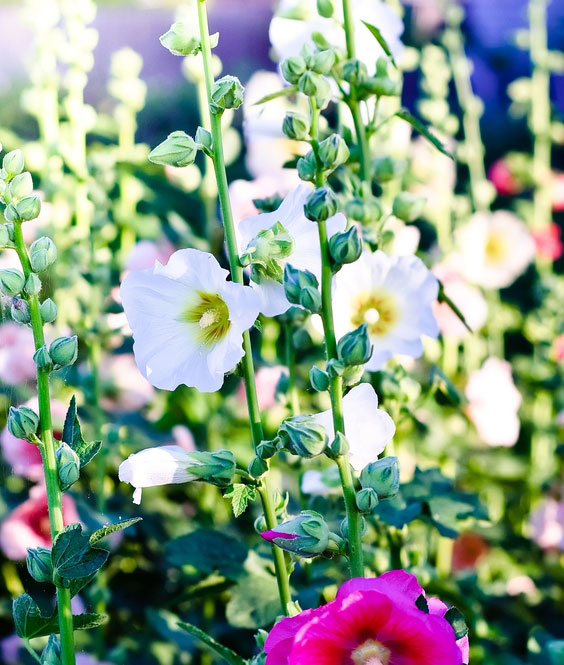
Creme de Cassis – This variation is a unique raspberry and white coloration that looks amazing in the sunlight. This plant will yield both semi-doubles and single blooms. The singles have a bright yellow center, and the semi-doubles feature a pretty little pink and white puff right in the middle of the other petals.
Icicle – I personally love having white flowers in my garden, and this variety of hollyhocks is perfect. The double pom pom bloom is the perfect back row for any colorful garden.
Alcea Ficifolia
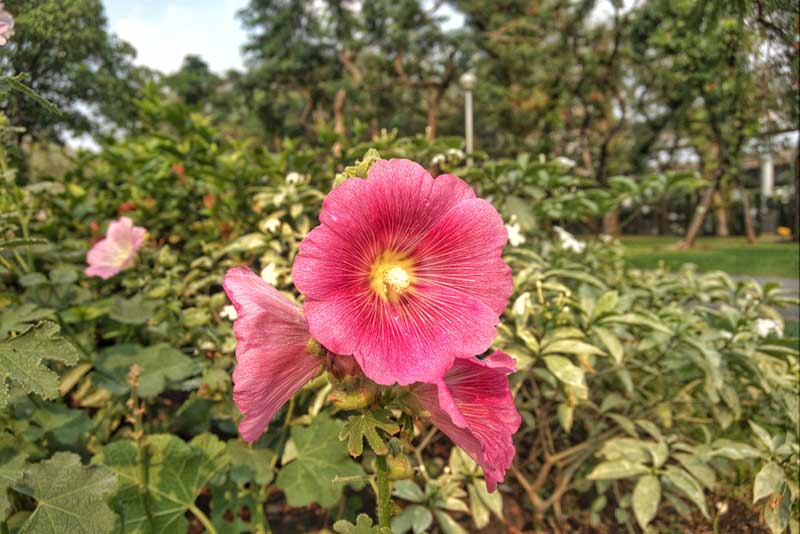
The next variety that we should look at is the Alcea Ficifolia, which is a lesser known type of Hollyhock. This fig-leaved Hollyhock is a robust plant that produces several stems at the base of the plant, each of which will yield blooms. Happy lights is a type of fig-leaved Hollyhocks that I really adore. Pink, red, and yellow blooms all emerge from the same plant and sometimes shades of purple can be seen as well.
Alcea Rugosa
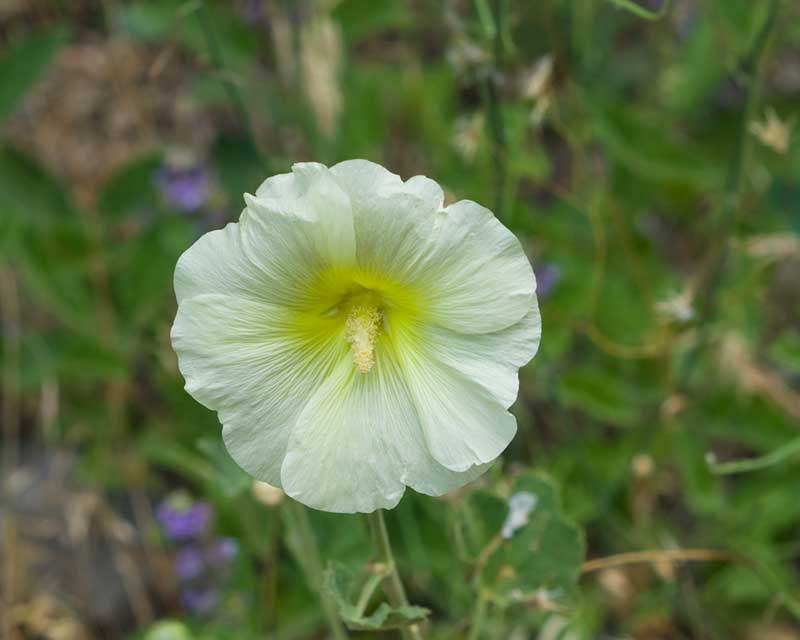
Alcea Rugosa is a type of Hollyhock that is native to Russia. It does not originate in the States, but this soft buttery yellow strain is a hardy variation that thrives nearly anywhere. They look best when a lot are planted together, but if you have a smaller garden, then less may be more attractive.
Alcea Nigra
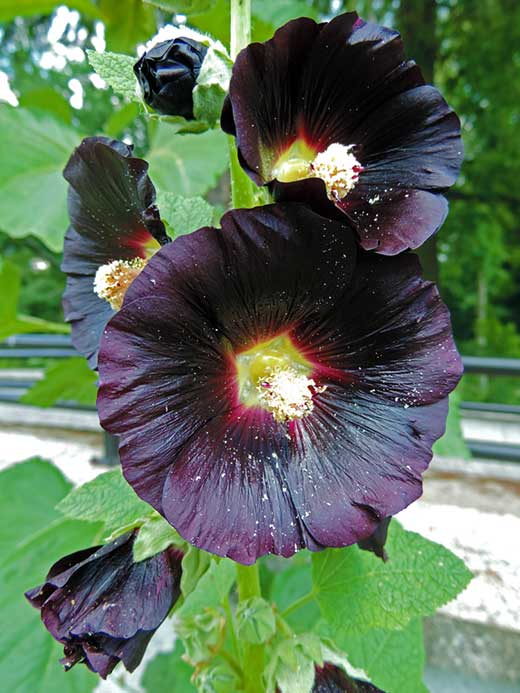
The last variation that I want to take a look at is a unique one. Most of the Hollyhocks we have discussed have featured pastel or vibrant colored petals, but this one is actually black; well, deep purple, but it looks black unless the light hits the petal just right. Most gardens tend to be bright and colorful, so this variation is perfect to add some contrast to your backyard.
Conclusion
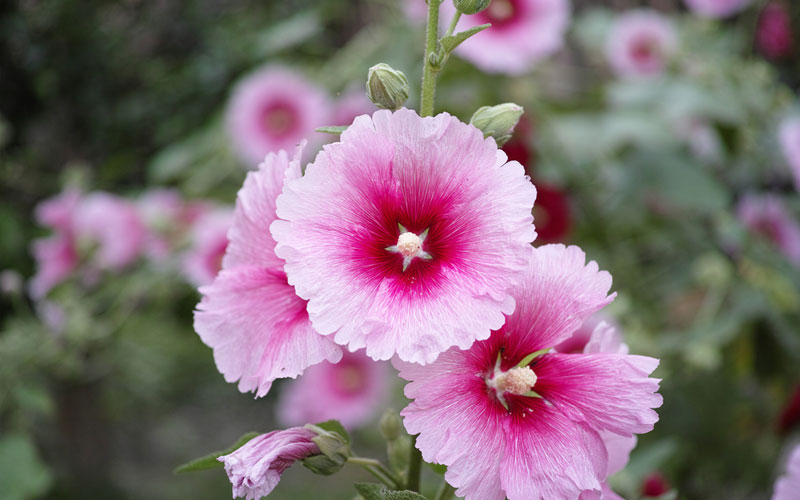
Hollyhocks are truly beautiful, and as you can see, there are a number of different options that you can choose from. Analyze your garden and consider which ones would enhance your garden. One feature that many gardeners do not realize is that Hollyhocks are completely edible, which means that you can use them to make your garden beautiful, but they are also perfect for creating a revitalizing tea. You can even crystallize the flowers to make stunning cake decorations.
Related Articles





